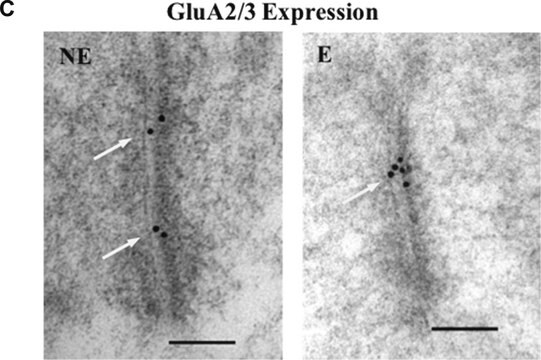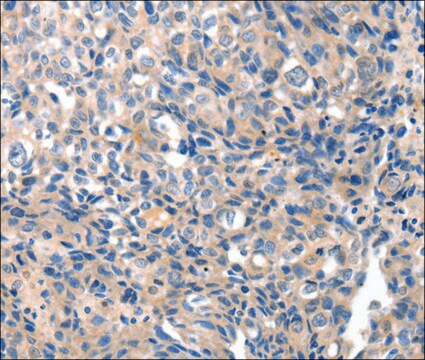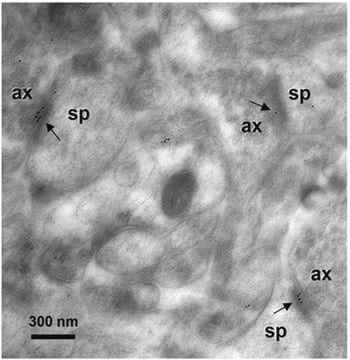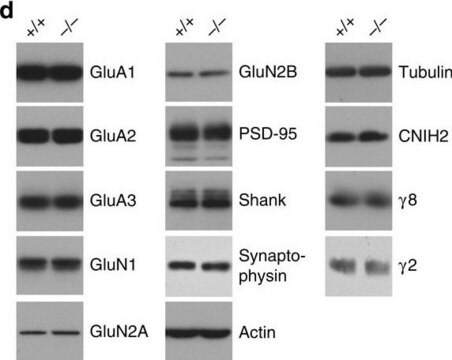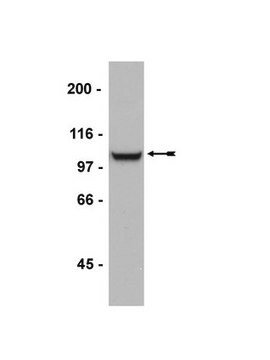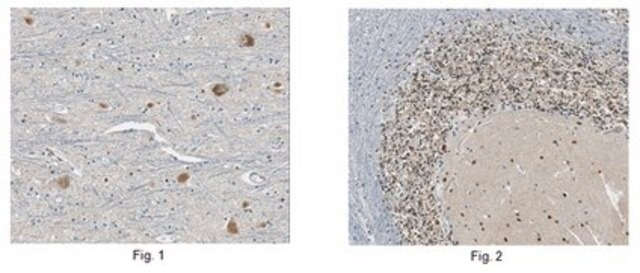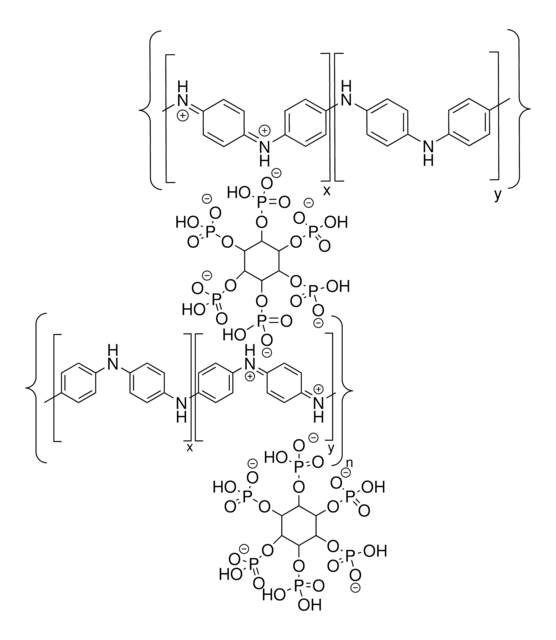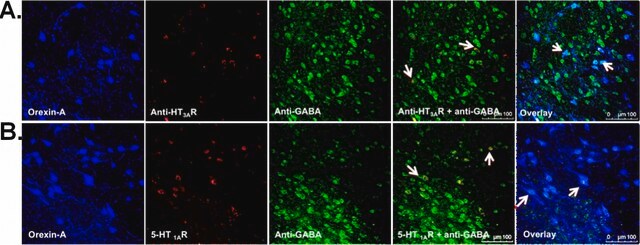AB1508
Anti-Glutamate Receptor 4 Antibody
Chemicon®, from rabbit
Synonim(y):
AMPA-selective glutamate receptor 4, Glutamate receptor ionotropic, AMPA 4, glutamate receptor 4, glutamate receptor, ionotrophic, AMPA 4
About This Item
Polecane produkty
pochodzenie biologiczne
rabbit
Poziom jakości
forma przeciwciała
affinity isolated antibody
rodzaj przeciwciała
primary antibodies
klon
polyclonal
oczyszczone przez
affinity chromatography
reaktywność gatunkowa
mouse, rat
producent / nazwa handlowa
Chemicon®
metody
immunocytochemistry: suitable
immunohistochemistry (formalin-fixed, paraffin-embedded sections): suitable
immunoprecipitation (IP): suitable
western blot: suitable
numer dostępu NCBI
numer dostępu UniProt
Warunki transportu
wet ice
docelowa modyfikacja potranslacyjna
unmodified
informacje o genach
human ... GRIA4(2893)
Opis ogólny
Specyficzność
Immunogen
Zastosowanie
Dilutions of 1:10 – 1:500 were tested on rat brain lysate.
Can be used for immunocytochemistry using paraformaldehyde or paraformaldehyde/glutaraldehyde fixed tissue with light and electron microscopy. Cryostat and vibratome sections can be used with or without Triton X-100 treatment. Suggested concentrations start at 1-3 μg/mL.
Western blot analysis can be done at final concentrations of 1-3 μg/mL.
Optimal working dilutions must be determined by end user.
Neuroscience
Neurotransmitters & Receptors
Jakość
Western Blotting Analysis: A 1:500 dilution of this antibody detected Glutamate Receptor 4 in mouse and rat brain membrane.
Opis wartości docelowych
Powiązanie
Postać fizyczna
Przechowywanie i stabilność
Handling Recommendations: Upon receipt, and prior to removing the cap, centrifuge the vial and gently mix the solution. Aliquot into microcentrifuge tubes and store at -20°C.
Komentarz do analizy
Rat Brain
Inne uwagi
Informacje prawne
Oświadczenie o zrzeczeniu się odpowiedzialności
Nie możesz znaleźć właściwego produktu?
Wypróbuj nasz Narzędzie selektora produktów.
Kod klasy składowania
12 - Non Combustible Liquids
Klasa zagrożenia wodnego (WGK)
WGK 2
Temperatura zapłonu (°F)
Not applicable
Temperatura zapłonu (°C)
Not applicable
Certyfikaty analizy (CoA)
Poszukaj Certyfikaty analizy (CoA), wpisując numer partii/serii produktów. Numery serii i partii można znaleźć na etykiecie produktu po słowach „seria” lub „partia”.
Masz już ten produkt?
Dokumenty związane z niedawno zakupionymi produktami zostały zamieszczone w Bibliotece dokumentów.
Produkty
The term neurodegeneration characterizes a chronic loss of neuronal structure and function leading to progressive mental impairments.
Nasz zespół naukowców ma doświadczenie we wszystkich obszarach badań, w tym w naukach przyrodniczych, materiałoznawstwie, syntezie chemicznej, chromatografii, analityce i wielu innych dziedzinach.
Skontaktuj się z zespołem ds. pomocy technicznej